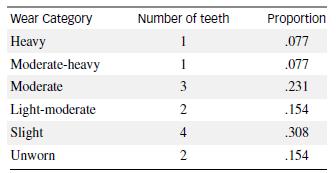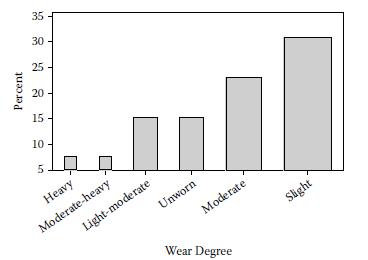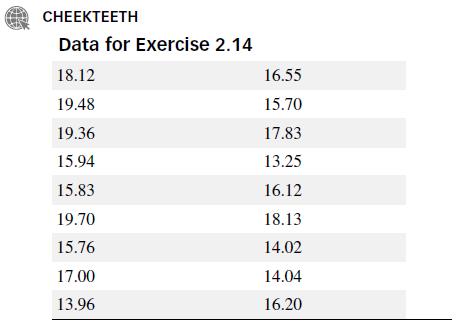Refer to the American Journal of Physical Anthropology (Vol. 142, 2010) study of the dietary habits of
Question:
Refer to the American Journal of Physical Anthropology (Vol. 142, 2010) study of the dietary habits of extinct primates, Exercise 2.14 . Recall that cheek teeth were extracted from skulls discovered in western Wyoming and analyzed for wear (unworn, slight, light-moderate, moderate, moderate heavy, or heavy). A summary of the 13 teeth that could be classified is shown in the accompanying table. Consider the bar graph shown below. Identify two ways in which the bar graph might mislead the viewer by overemphasizing the importance of one of the performance measures.


Data from Exercise 2.14
The characteristics of cheek teeth (e.g., molars) can provide anthropologists with information on the dietary habits of extinct mammals. The cheek teeth of an extinct primate species was the subject of research reported in the American Journal of Physical Anthropology (Vol. 142, 2010). A total of 18 cheek teeth extracted from skulls discovered in western Wyoming were analyzed. Each tooth was classified according to degree of wear (unworn, slight, light-moderate, moderate, moderate-heavy, or heavy). In addition, the researchers recorded the dentary depth of molars (in millimeters) for each tooth. These depth measurements are listed in below.

Step by Step Answer:

Statistics For Engineering And The Sciences
ISBN: 9781498728850
6th Edition
Authors: William M. Mendenhall, Terry L. Sincich




